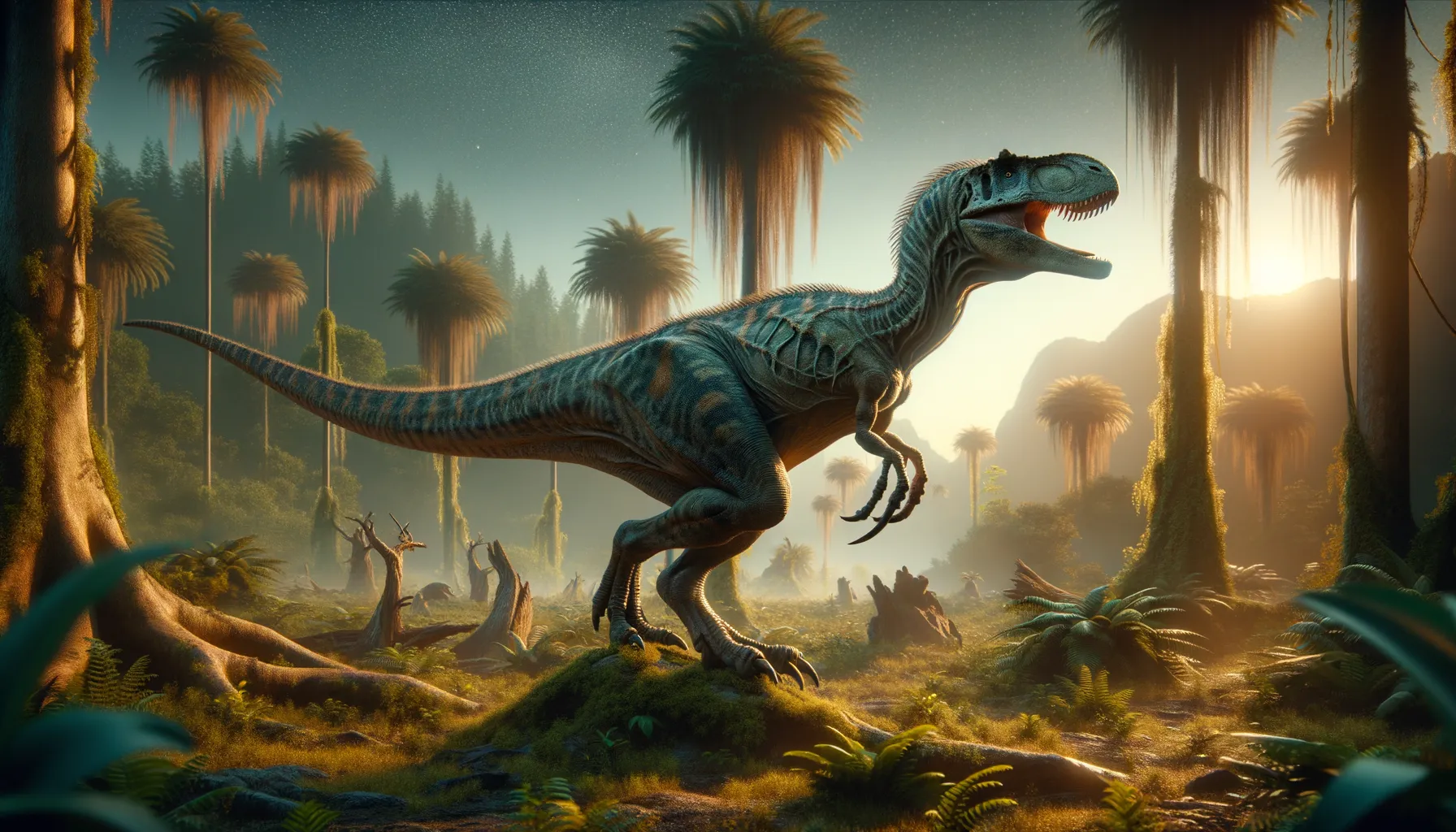
Pandoravenator
Ancient predator of Patagonia's wild lands.
Period
Cretaceous
Length
Around 5 to 6 meters long.
Height
Nearly 2 meters tall at the hip.
Weight
Approximately 500 kilograms.
Pandoravenator was a predatory dinosaur from the Cretaceous period, known for its distinct skeletal features. Its remains were first discovered in Argentina, highlighting a diverse ecosystem of the time. As a theropod, it was likely a bipedal carnivore, navigating its environment with agility. The discovery of Pandoravenator adds to the growing understanding of dinosaur diversity in South America during the late Cretaceous.
Diet
Pandoravenator was a carnivore, likely feeding on smaller dinosaurs and other animals it could overpower. Its sharp teeth and claws would have been well-suited for capturing and consuming prey.
Hunting
This dinosaur likely relied on stealth and speed to ambush prey. As a solitary hunter, it would have relied on its keen senses to track and capture its food, possibly using cover to approach unsuspecting targets.
Environmental challenges
Pandoravenator lived in a time of significant ecological change, with fluctuating climate conditions affecting food availability. Competition with other predators posed challenges, requiring it to adapt its hunting strategies. Additionally, maintaining territory and competing for resources would have been ongoing trials in the dynamic ecosystems of the Cretaceous.
Speed
Moderate, likely similar to a large theropod.
Lifespan
Estimated to be around 20 to 30 years.
First discovery
Discovered in Patagonia, Argentina, in 2018.
Fun Facts
- Pandoravenator was a theropod dinosaur, which means it was likely a carnivore walking on two legs.
- Its name means 'Pandora's hunter', after the Argentinian province where its fossils were found.
- It lived during the Late Jurassic period, about 150 million years ago.
- Pandoravenator's bones were discovered in a region known for many other ancient dinosaur fossils, adding to our understanding of prehistoric ecosystems.
- This dinosaur was relatively small compared to giants like T. rex, making it an agile predator of its time.
Growth and Development
Pandoravenator likely hatched from eggs and would have grown rapidly in its early years to avoid predation. Juveniles may have had different feeding habits than adults, possibly consuming smaller prey. As it matured, its hunting skills and physical capabilities would have evolved, allowing it to tackle larger prey.
Habitat
This dinosaur inhabited the lush landscapes of ancient Patagonia, which were rich in plant life and diverse animal species. The region provided varied terrain, from open areas to forested regions, offering both cover and opportunities for hunting. Seasonal changes in this area could have influenced migration patterns and resource availability.
Interaction with other species
Pandoravenator would have interacted with both predators and prey, potentially competing with other theropods for food. It may have occasionally scavenged carcasses left by other hunters. Its environment likely contained herbivores and smaller animals that contributed to its diet and hunting opportunities.
Natural lifespan
Pandoravenator's natural lifespan was probably around 20 to 30 years.
Reproduction
Reproduction likely involved laying eggs in nests, with parental care possibly provided by one or both parents to protect the offspring. Nests would have been strategically placed to maximize the survival of the young, potentially in secluded areas.
Social behaviour
While primarily a solitary hunter, Pandoravenator might have engaged in social interactions during the mating season. Like many theropods, it may have displayed courtship behaviors to attract mates. Cooperation in hunting or other social activities seems unlikely, given its solitary nature.
Fossil locations
Fossil remains of Pandoravenator have primarily been found in Patagonia, Argentina. These findings contribute valuable information to the understanding of theropod diversity in South America. The fossilized bones discovered include fragments of the skull, vertebrae, and limb elements, which aid in reconstructing its anatomy.
